What Is a Call To Action?
A Call to Action, or CTA for short, is a big part of your marketing strategy and marketing funnel. CTAs are placed on your website, marketing email, or social media post to get your target audience to engage by taking action. You can encourage your website visitors to take the action you suggest to take the next step in your sales process.Where Can You Find CTAs?
CTAs are most commonly used at the end of a post, article, or web page. You can as well find CTAs throughout your website or even in the navigation bar on top. A CTA can appear in different forms. Some marketers might display a CTA as a text hyperlink or even plain text without any link. The by far most common way to display a CTA is in button form.
It is most important that the CTA serves its purpose and is tailored to the marketing funnel on your website. Typical examples of CTA are something along the lines of “Buy Now”, “Sign up Now”, or “Send an Inquiry”.
Let’s say the primary goal of your website is to receive an email from a potential customer; your CTA needs to be clear that the following action to take is to send an email to you.
Why Are Calls to Action Important?
Since we now know whats CTAs are, it’s time to discuss why they’re important. CTAs are an essential part of your marketing funnel and sales strategy to convert prospects and site visitors into paying customers or clients. Without CTAs, your prospects will not necessarily know what step to take next to proceed. You can never assume prospects will follow the sales path you predict or want them to take.Having CTAs will tell your prospects what step you’d like them to take next and guide them through your website. Using CTAs, you will enhance your prospects’ user experiences by being direct and telling them what you want them to do, and leaving no questions unanswered.In order to get a suitable CTA for your website, you could apply A/B testing to see which CTA works best. You could compare different CTAs at the same place on your website and use analytics to figure out which one helps convert more prospects into customers or clients.Primary and Secondary CTAs
Some marketers follow a slightly different route when it comes to using CTAs. They use primary and secondary CTAs to direct their visiting customers. The primary CTA is usually highlighted and displayed in a much higher hierarchy than the secondary CTA. The secondary CTA directs the website visitors to a different page than the primary CTA if the visitor does not want to follow the primary CTA’s direction.
Example Cookies
This is a very common procedure when it comes to cookie banners. It is not allowed to have cookies enabled on your website without the visitor’s permission. But since you – as a website owner – would like to enable some tracking and marketing cookies for your analytics, you would like to get the permission. Most visitors’ reflex is to click on the primary, more dominant CTA, which could be something like “allow all cookies”. If they don’t want to be tracked, they have to have the option of disabling all but necessary cookies – hence the secondary CTA.
The following example from cookie-script.com shows this concept quite well.
Note how the cookie banner in the bottom left has 2 CTAs. “ACCEPT ALL” or “DECLINE ALL”. For tracking, analytics, and marketing purposes, the visitor should be clicking “ACCEPT ALL”. In order to get the visitor to do that, this primary CTA is much more prominent within the Cookie popup.
Examples
As mentioned above, most CTAs are short like “buy now”, “visit our store” and many more examples. I’ve listed two examples below that – in my opinion – illustrate this concept very well.
This CTA stands out right after looking at the headline “REACH FURTHER”. Nike.com only used a single word, “Shop”. The objective for this CTA is apparent and straightforward.
I took another example for a short CTA from the homepage of our own website saigon-digital.com. We displayed some of our case studies here and added a simple CTA to guide the viewers towards reading more about each project.
As seen in the example above, using bespoke development, we can make sure that the CTA fulfills its purpose. We chose a layout where the CTA has the second-highest hierarchy on the page (1st headline, 2nd CTA). We clearly want the viewer to look at the full case study on Pixcap here.
Tips
To finish this post, I’d like to give my personal four most important CTA tips.- Ensure your visitors know what to do and what step to take next after every stage in your sales process or marketing funnel on your website or social media. This can be as simple as “Read more”, “Sign up” or “Buy now”.
- If you sell a product or service, you could make an offer time-dependent. Some marketers, especially hotel booking services, use CTA in the form of “Book the last room now” or similar. This creates a sense of urgency and will help with conversions. Instead of a supply limiting element, you could use a time pressing element as well “Sign up within the next hour to get a 10% discount”, “Order now before the supply runs out” or the classic “Limited time offer”.
- CTAs help keep the visitors engaged on your site. Depending on your website language and tone, you can increase user engagement by choosing different wording on your call to actions. This is obviously very dependent on your target audience, so be careful. Make sure your CTAs fulfill their purpose!
- Make sure that every page on your website, every marketing email, and every printed or published piece representing you as a company and has a clear, noticeable, and easily identifiable CTA.





